Food Secrets: 15 Rare Indian Fruits That Will Amaze You With Their Uniqueness
There are several unique and increasingly rare fruits in India that are collected from the wild and eaten mostly by the local inhabitants. A reminder of changing seasons and childhood summers, here is a look at 15 fruits from India that can open up an entirely new world to you.

If you take a stroll through a supermarket’s perishable produce aisle, you might be forgiven for thinking that you have an impressive variety of fruit at your fingertips. In reality, however, these fruits are only some a small sample of the wide variety of delicious and exotic fruits that exist out there.
Did you know that India holds the distinction of being the world’s second largest producer of fruits?
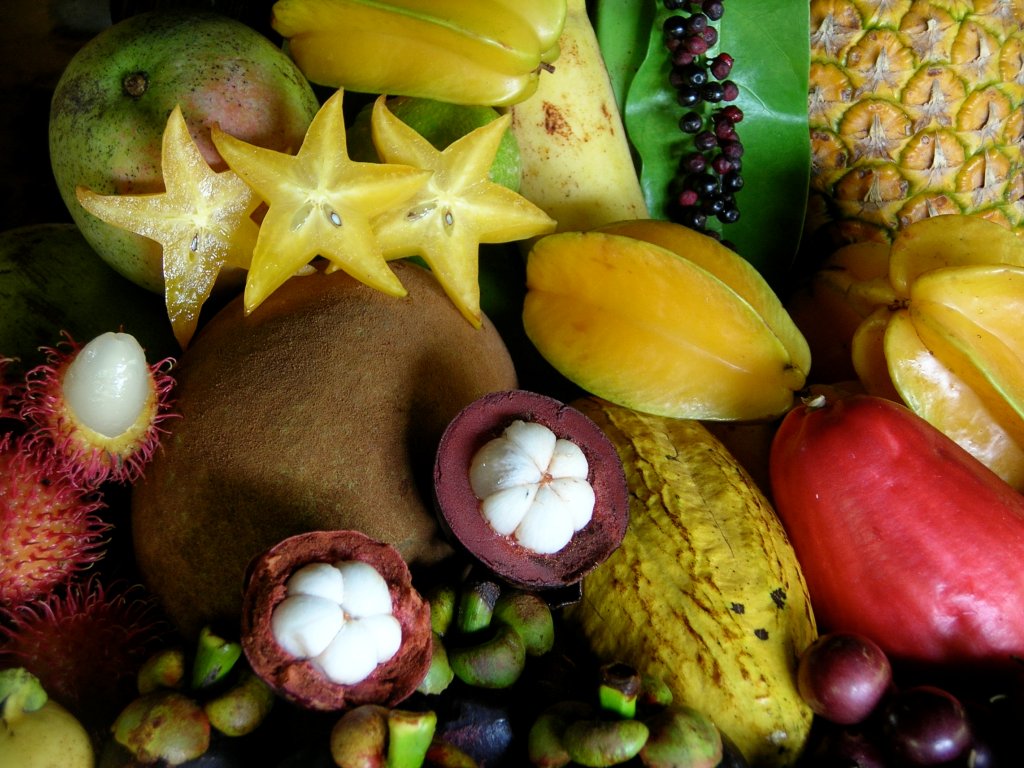
Photo Source
With a climate that ranges from Himalayan to tropical, India has much to offer in terms of fruit diversity. While major fruits like mango, banana and citrus varieties are grown in abundance in many parts of the country, there are several unique and increasingly rare minor fruits that are collected from the wild and eaten mostly by the locals. It is only during the searing summers and cold winters of the subcontinent that some of these fruits appear on the rickety carts of street hawkers in Indian towns.
A reminder of changing seasons and childhood summers, here are 15 little known fruits from India that can open up an entirely new world to you. So go on, take a look, and be sure to comment below with your experiences, favorite fruits, and any others that we’ve missed!
1. Jungli Jalebi/Kodukkapuli (Camachile)
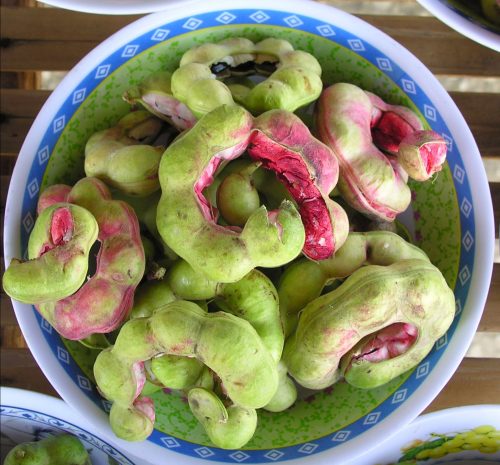
Photo Source
The spiralling green-pink pods of jungli jalebi (or kodukkapuli) contain about 6-10 shining black seeds enveloped in a thick sweet edible pulp. While the pulp can be eaten raw or made into a drink similar to lemonade, the tangy seeds are used in curries. It is due to the fruit’s resemblance to the Indian sweet jalebi that the plant has been given the name jungli jalebi.
Grown in: Tamil Nadu, Kerala, Maharashtra, Karnataka, Andhra Pradesh and West Bengal
2. Carambola (Star Fruit)
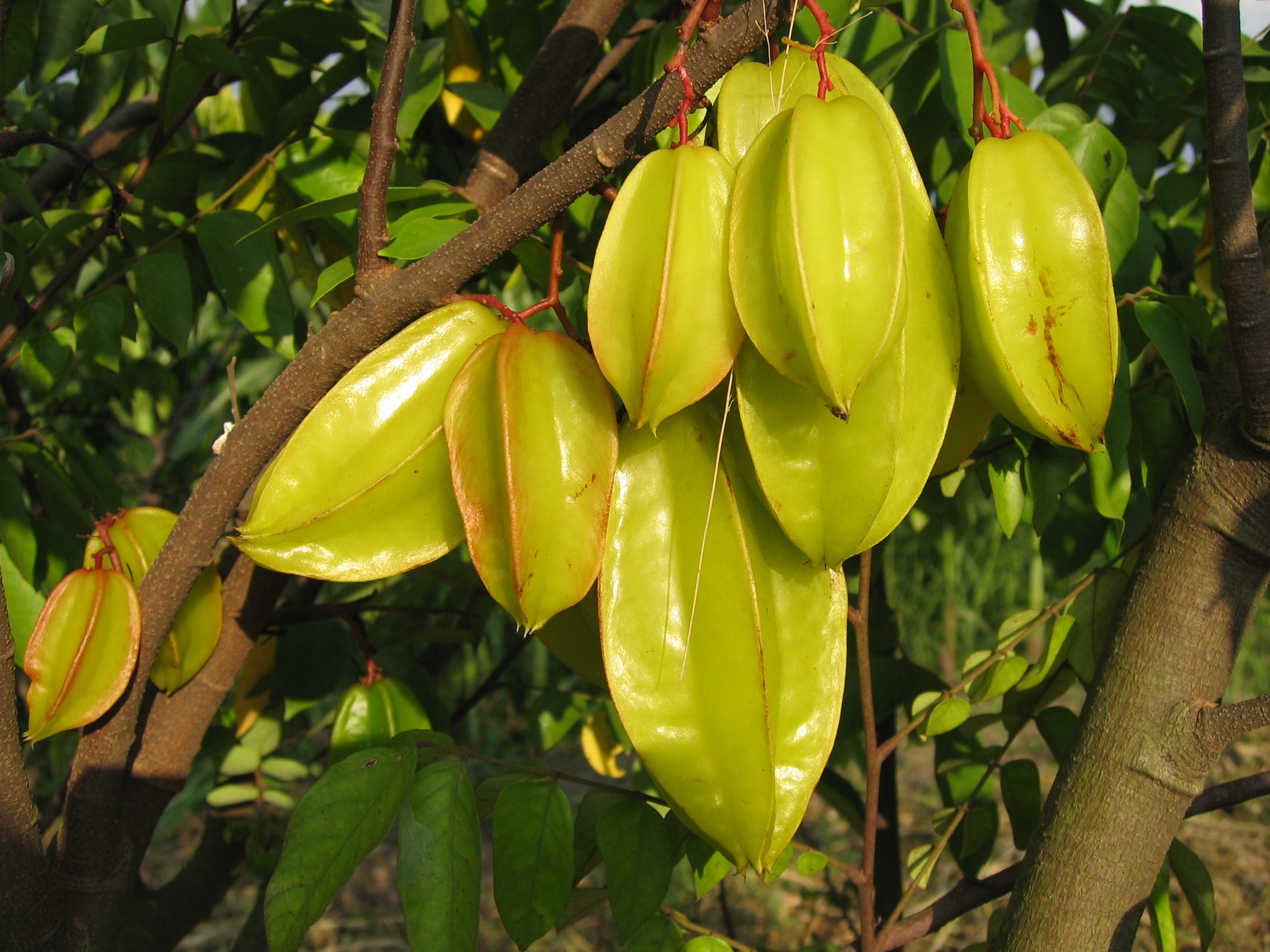
Photo Source
Carambola is a fruit with a waxy skin and a green to golden yellow color. The ripe fruit has a distinctly yellow colour, with slightly brown ribs, and it makes a great preserve or pickle. Unripe ones are lime green, taste sour and are best eaten when sliced and sprinkled with a mixture of salt and chili powder. Grown in the months of September-October and January-February, India is one of the largest producers of this fruit.
Grown in: Throughout India (especially in South India)
3. Buddha’s Hand (Fingered Citron)

Photo Source
A stunning fruit, Buddha’s hand looks like a lumpy lemon with elongated, yellow tentacles (that resemble gnarled human fingers) protruding from the base; hence, its name—Buddha’s hand. Buddha’s hand has a mild yet zesty flavour and is wonderfully aromatic—it is known to fill rooms with its fresh floral perfume. Believed to have originated in the lower Himalayas, botanists are unsure if it’s native to the region in India or China – some scholars believe that India’s migrating Buddhist monks carried the fruit with them to China in 400 AD.
Grown in: Northeastern India
4. Langsah/Lotka (Langsat)

Photo Source
A small, translucent, orb-shaped fruit, langsah is most often found in South India. They can be quite sour when unripe, but are perfectly sweet when ripe with a taste similar to a bittersweet grapefruit. Even though this fruit’s demand skyrockets when it is in season, its cultivation does not extend beyond a handful of regions in the south.
Grown in: Throughout eastern and southern India (especially in the Nilgiri hills)
5. Mangustaan (Mangosteen)
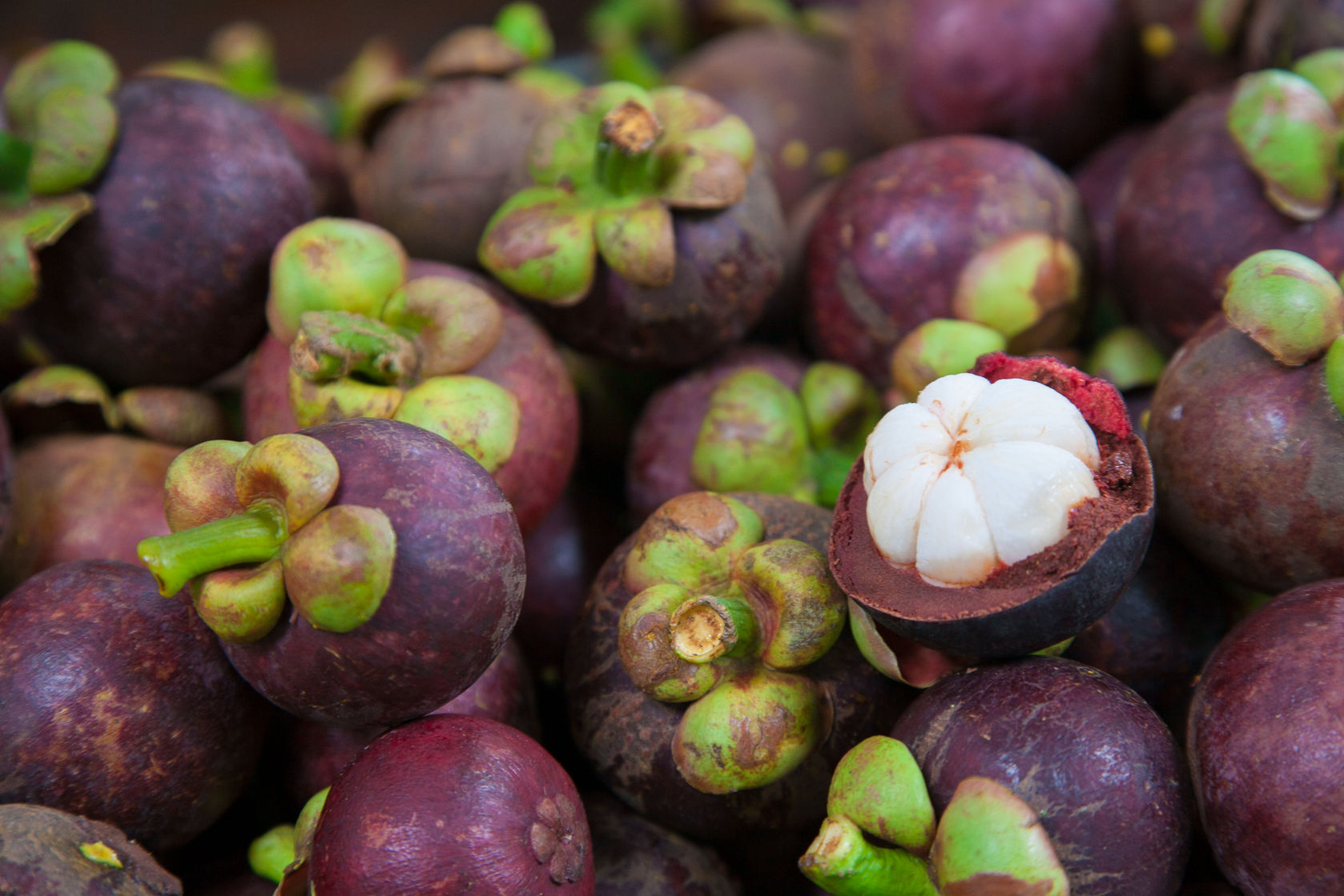
Photo Source
A fragrant tropical fruit about the size of a small orange, mangustaan’s leathery purple-maroon shell surrounds a moist, snow-white and sweet fleshy interior. Though it is the national fruit of Thailand, it is believed that the trees of this fruit used to flourish in southern India throughout the 18th century. Mellow and earthy, mangustaan is similar to mango in taste and is completely ripe only when its woody, leathery purple rind yields to the touch.
Grown in: The Nilgiri hills, the southern districts of Tirunelvely and Kanyakumari in Tamil Nadu, and Kerala.
6. Japani Phal (Persimmon)
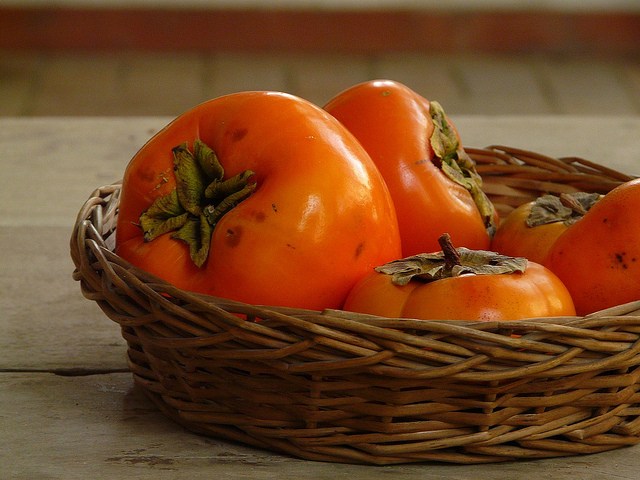
Photo Source
A temperate fruit, Japani phal is the local Himachal name of the exotic, deep orange-red-coloured and luscious persimmon. Strikingly similar in appearance to a tomato, a completely ripe japani phal is soft, sweet and tasty. The fruit, which is a native of China, spread to Korea and Japan and was initially introduced in India by European settlers in the early 20th century.
Grown in: Himachal Pradesh, Jammu and Kashmir, Uttarakhand and Nilgiri Hills
7. Ambarella (Indian Hog Plum)

Photo Source
Also called wild mango, a ripe ambarella has the puckering acidity of an unripe mango and the gentle sweetness of pineapple. Ambarellas can be enjoyed in every imaginable form: as a juice, as a pickle, as flavouring in fruity cocktails, and as simple slices, sprinkled with salt and red chilli powder.
Grown in: Tamil Nadu, Kerala, Karnataka, Maharashtra, and Goa
You May Like: This Ex-Microsoft Director Returned to India to Put Jackfruit on the Superfood Map .
8. Bael (Wood Apple)
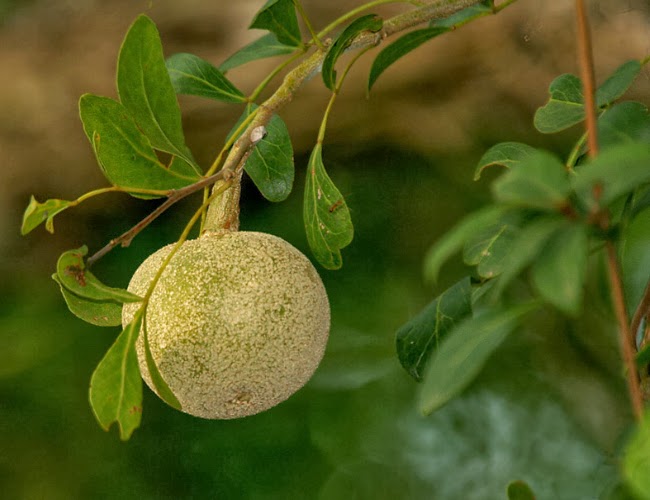
Photo Source
An extremely versatile fruit, bael can be eaten fresh or dried or even made into a drink. As the name suggests, this fruit has a woody exterior that you need to break open with a knife or pestle. Inside, you will find a sticky pulp, with a taste that ranges from very tart when raw to sweet-and-sour when fully ripe. Commonly eaten with a little jaggery to temper the acidity, the fruit is also used to make jam, chutney or sherbet.
Grown in: Maharashtra, Andhra Pradesh, Tamil Nadu, Kerala, Karnataka, Madhya Pradesh and the western Himalayas.
9. Chalta (Elephant Apple)
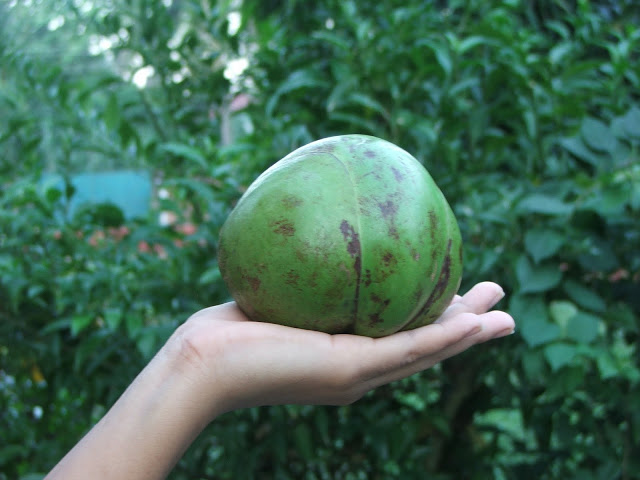
Photo Source
One of the favorite fruits of wild elephants, chalta thrives in the wet soil and humid atmosphere of swamps and semi-tropical forests. The knobby grapefruit-sized fruits are yellow-green, and ripen to get a leathery brown covering. Mildly sweet and acidic in taste, most locals value elephant apples not for their jelly-like pulp, but rather, their crunchy outer petals. Unripe fruits are often pickled or used for chutney. Since they are a major source of food for elephants, monkeys and deer, it is prohibited to collect them from the core areas of the forest.
Grown in: Assam, Kolkata, Bihar, Odisha and the sub-Himalayan tract from Kumaon to Garhwal.
10. Chakotra/Batabi Lebu (Pomelo)

Photo Source
An unusual member of the citrus family, chakotras or pomelos have the taste of a slightly sour grapefruit without the bitterness and acidity, coupled with gorgeous floral overtones. Pomelos came to India from Balavia in Indonesia, which is the reason for their other local name, Batabi-Lebu. The fruit even features in cultural celebrations – in the Garo Hills of Meghalaya, locals perform a “pomelo dance”, which entails spinning a cord-tied pomelo around the waist.
Grown in: Northeast India, West Bengal and some areas of Karnataka and Kerala
11. Karonda (Carandas Cherry)

Photo Source
A nutrition rich wild berry, karondas are pink coloured fruits with tiny seeds at its core. The flesh of the raw fruit is firm with a tart flavour that tastes delicious when eaten with a sprinkling of rock salt. Becoming tender, luscious and purple tinted as they ripen, karondas a good substitute in recipes that call for cranberries. A great source of natural pectin, these berries are also commonly used in jams and sweet pickles.
Grown in: The Siwalik Hills of Bihar and West Bengal, the Western Ghats and the Nilgiri Hills
12. Bilimbi (Tree Sorrel)

Photo Source
A relative of the star fruit, bilimbis are bright green and firm when raw and becomes yellowish, glossy and tender as they ripen. The Indian variety of bilimbis have tart, tangy, acidic, and sharp notes that pack quite a punch. Many bilimbi lovers make a lemonade-type drink to capitalize on these refreshing attributes. To reduce its acidity, the fruit is often pricked first and soaked in salt water for a short period, before being used in chutneys, pickles and jams.
Grown in: Kerala, Maharashtra, Karnataka, Tamil Nadu, and Goa.
13. Targola/Taal (Ice Apple or Sugar Palm fruit)

Photo Source
A type of palm fruit that grows in clusters, targola or taal has a stiff brown exterior and a jelly-like interior. On cutting open, each fruit has jelly-like segmented seeds with a soft off-white skin that darkens to a light brown when exposed to air. Removing the thin skin can be tiresome, but the effort is well worth it. A cooling treat in the hot summer season, biting into a targola releases the refreshing sweet juice that resides in the center of each segment. The fruit is also used to make toddy, a local alcoholic beverage.
Grown in: Tamil Nadu, Andhra Pradesh, Maharashtra, Goa, and Kerala.
14. Phalsa (Indian Sherbet Berries)

Photo Source
A tiny dark purple fruit that beautifully balances sweet and sour flavours, phalsa will remind you of blueberries. Extremely rich in calcium, iron, magnesium, potassium, phosphorus and vitamin C, phalsa is a super fruit with an effective cooling effect that is perfect for summers. It is mostly eaten ripe and fresh, with a sprinkling of salt and black pepper. However a syrup or a squash of the fruit is also prepared, so that one can enjoy this healthy fruits’ benefits for a longer time.
Grown in: Throughout India
15. Khirni/Rayan (Mimusops)
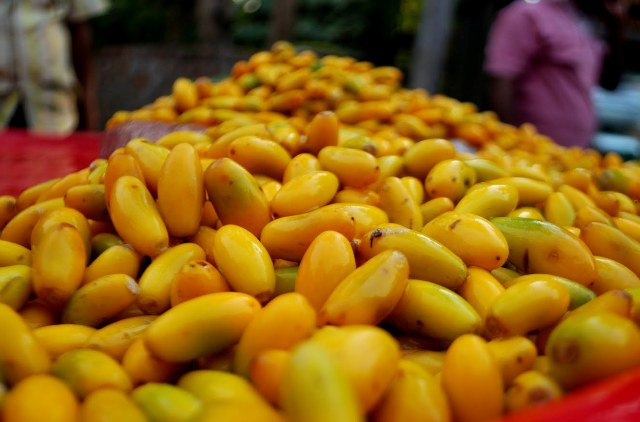
Photo Source
Golden yellow berries with a melting fruity sweetness, khirni or rayan is a member of the Sapotaceae family found across the tropics (that also includes sapota or chikoo). Available only for a very short period in May, just when the summer season begins, khirni is often sold alongside the more popular purple-hued jamun, the reason why many people assume it has a similar astringency. It does, but the puckering sourness disappears when you let it ripen almost to the point when rot sets in.
Grown in: Central India and the Deccan Peninsula
You May Like: Food for Thought: Unpeeling the Mango’s Interesting History in India
Like this story? Have something to share? Email: contact@thebetterindia.
NEW! Log into www.gettbi.com to get positive news on Whatsapp.
This story made me
- 97
- 121
- 89
- 167
Tell Us More
We bring stories straight from the heart of India, to inspire millions and create a wave of impact. Our positive movement is growing bigger everyday, and we would love for you to join it.
Please contribute whatever you can, every little penny helps our team in bringing you more stories that support dreams and spread hope.



















